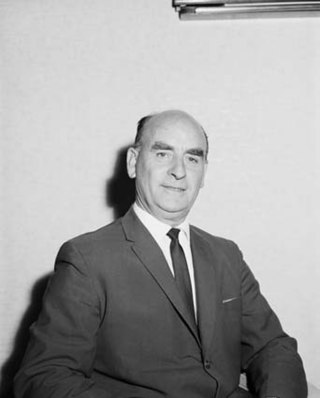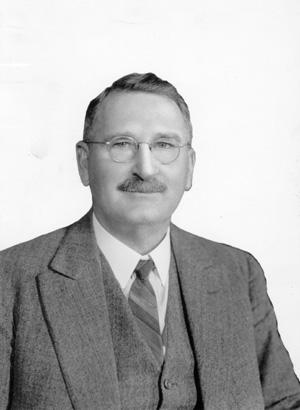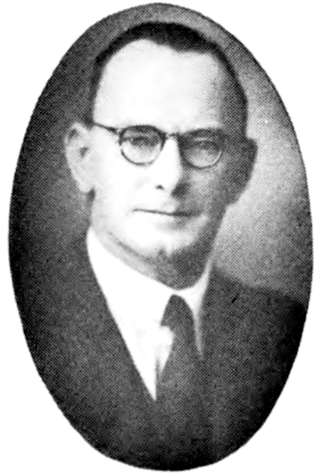The Electoral district of Brown Hill-Ivanhoe was a Legislative Assembly electorate in the state of Western Australia. It covered part of the Goldfields city of Boulder, near Kalgoorlie, and neighbouring mining areas. It was created at the 1911 redistribution out of the former seats of Brown Hill and Ivanhoe, and was first contested at the 1911 election. It was abolished in the 1948 redistribution, with its area split between the neighbouring electorates of Boulder and Hannans, taking effect from the 1950 election. The seat was a very safe one for the Labor Party.

John Trezise Tonkin AC, popularly known as "Honest John", was an Australian politician.

Albert Redvers George Hawke was the 18th Premier of Western Australia. He served from 23 February 1953 to 2 April 1959, and represented the Labor Party.

Philip Collier was an Australian politician who served as the 14th Premier of Western Australia from 1924 to 1930 and from 1933 to 1936. He was leader of the Labor Party from 1917 to 1936, and is Western Australia's longest-serving premier from that party.

John Collings Willcock was the 15th Premier of Western Australia, serving from 1936 until 1945. He was a member of the Australian Labor Party.

Edmund Harry Gray was an Australian trade unionist and politician who was a Labor Party member of the Legislative Council of Western Australia from 1923 to 1952, representing West Province. He served as a minister in the governments of John Willcock and Frank Wise.
The Wise Ministry was the 20th Ministry of the Government of Western Australia. It succeeded the Willcock Ministry on 3 August 1945 and was led by Labor Premier Frank Wise, who had previously been Minister for Lands and Agriculture. All of the Ministers continued from the previous Ministry, although in several cases with new or altered responsibilities. The Wise Ministry was succeeded by the McLarty–Watts Ministry on 1 April 1947 after Labor were defeated in the 1947 election.
This is a list of members of the Western Australian Legislative Assembly between the 1936 election and the 1939 election, together known as the 16th Parliament.
The Carpenter Ministry was the 34th Ministry of the Government of Western Australia, and was led by Labor Premier Alan Carpenter and his deputy Eric Ripper. It succeeded the Gallop Ministry on 3 February 2006 due to the retirement of Dr Geoff Gallop from politics on 25 January, and was in turn succeeded by the Barnett Ministry on 23 September 2008 after the Labor Party lost government at the state election held on 6 September.
The Court–Cowan Ministry was the 32nd Ministry of the Government of Western Australia, and was led by Liberal Premier Richard Court and his deputy, the Nationals' Hendy Cowan. It succeeded the Lawrence Ministry on 16 February 1993, following the defeat of the Labor government at the 1993 election ten days earlier. The Ministry was reconstituted on 9 January 1997 following the December 1996 election, due in part to the retirement and resignation of several ministers—Richard Lewis, Kevin Minson, Roger Nicholls and Bob Wiese. The ministry was followed by the Gallop Ministry on 16 February 2001 after the Coalition lost government at the state election held on 16 February.
The Court Ministry was the 27th Ministry of the Government of Western Australia, led by Liberal Premier Sir Charles Court and deputy Des O'Neil. It commenced on 5 June 1975, following the Court–McPharlin Ministry, 15 months after the Coalition's electoral defeat of the Tonkin Labor government. It was followed by the O'Connor Ministry upon Court's retirement as Premier on 25 January 1982.
The Willcock Ministry was the 19th Ministry of the Government of Western Australia, and was led by Labor Premier John Willcock. It succeeded the Second Collier Ministry on 27 August 1936, upon the resignation of Philip Collier as Premier on ill health grounds. It became the longest-serving Labor ministry in Western Australia.
Thomas John Hughes, sometimes known as Diver Hughes, was an Australian politician, and a member of the Western Australian Legislative Assembly representing the seat of East Perth for two periods; from 1922 until 1927, and again from 1936 until 1943.

The Lyons government was the federal executive government of Australia led by Prime Minister Joseph Lyons. It was made up of members of the United Australia Party in the Australian Parliament from January 1932 until the death of Joseph Lyons in 1939. Lyons negotiated a coalition with the Country Party after the 1934 Australian federal election. The Lyons government stewarded Australia's recovery from the Great Depression and established the Australian Broadcasting Corporation.
Harold Millington was an Australian politician. He was a Labor Party member of the Parliament of Western Australia; as a member of the Legislative Council for North-East Province for six years from 1914, and as a member of the Legislative Assembly from 1924 to 1947, representing the electorates of Leederville (1924–1930) and Mount Hawthorn (1930–1947). He was a long-serving state minister in the governments of Philip Collier and John Willcock, and was Deputy Premier under Willcock.
Selby Walter Munsie was an Australian politician who was a Labor Party member of the Legislative Assembly of Western Australia from 1911 until his death, representing the seat of Hannans. He served as a minister in the governments of Philip Collier and John Willcock.
Emil Nulsen was an Australian politician who was a Labor Party member of the Legislative Assembly of Western Australia from 1932 to 1962. He served as a minister in the governments of John Willcock, Frank Wise, and Albert Hawke.

William Henry Kitson was an Australian politician who was a Labor Party member of the Legislative Council of Western Australia from 1924 to 1947. He was a minister in the governments of Philip Collier, John Willcock, and Frank Wise, and later served as Agent-General for Western Australia from 1947 until his death.
Frederick Charles Lee Smith was an Australian trade unionist, journalist, and politician who was a Labor Party member of the Legislative Assembly of Western Australia from 1932 to 1950, representing the seat of Brown Hill-Ivanhoe. He served as a minister in the government of John Willcock.

The Second Perrottet ministry or Second Perrottet–Toole ministry was the 99th ministry of the Government of New South Wales, and was led by Dominic Perrottet, the state's 46th Premier.








